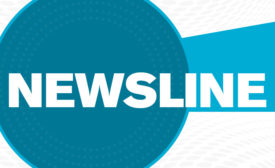Home » home energy
Articles Tagged with ''home energy''
Americans spend nearly $2,000 a year on energy bills; about half pays for heating and cooling
Read More
WeatherBug App Gives Consumers Insight on How Weather Impacts Energy Use
Works with launch partners Honeywell, Nest, Samsung SmartThings, and Accelerated Innovations
October 6, 2015
Data from First-of-its-Kind Residential Energy Study Now Available on OpenNY
Data will help in targeting opportunities to reduce energy use in homes
September 28, 2015
Cool Care Heating & Air Honored by DOE
Bryant dealer wins award for its energy efficiency program
September 10, 2015
Opower and Nest Score Highest in Assessment of Home Energy Management Vendors
Opower offers leading suite of solutions, Nest expands its home energy management capabilities
September 8, 2015
Wind, Solar, and the Renewable Energy Tax Credit
Manufacturers, contractors, and customers prepare for tax credit expiration in 2016
Read More
Emerging Companies Fuel the Energy Management Market
Firms are increasingly turning their attention to smart building solutions
August 31, 2015
Home Energy Management Systems Market to Grow at CAGR of 27% to 2019
The need for energy conservation will drive the market
August 25, 2015
More Homeowners Demanding Smart Comfort Control
Marketing awareness expected to drive sales, create opportunities for contractors
Read More
Minnesota Ponders Geothermal Heat Pump Inclusion
New legislation would create rebates for property owners who install GHPs
August 3, 2015
Copyright ©2024. All Rights Reserved BNP Media.
Design, CMS, Hosting & Web Development :: ePublishing




